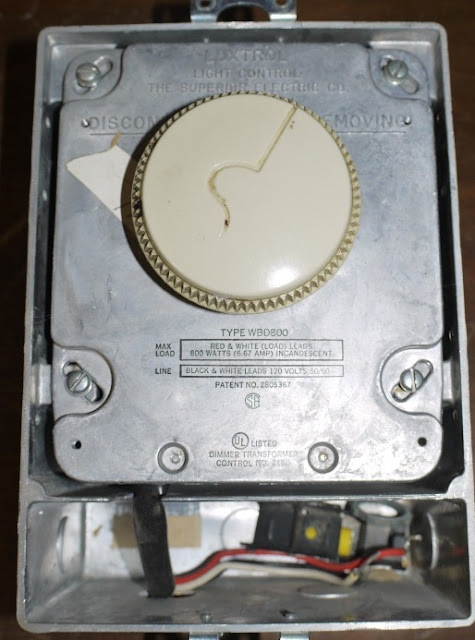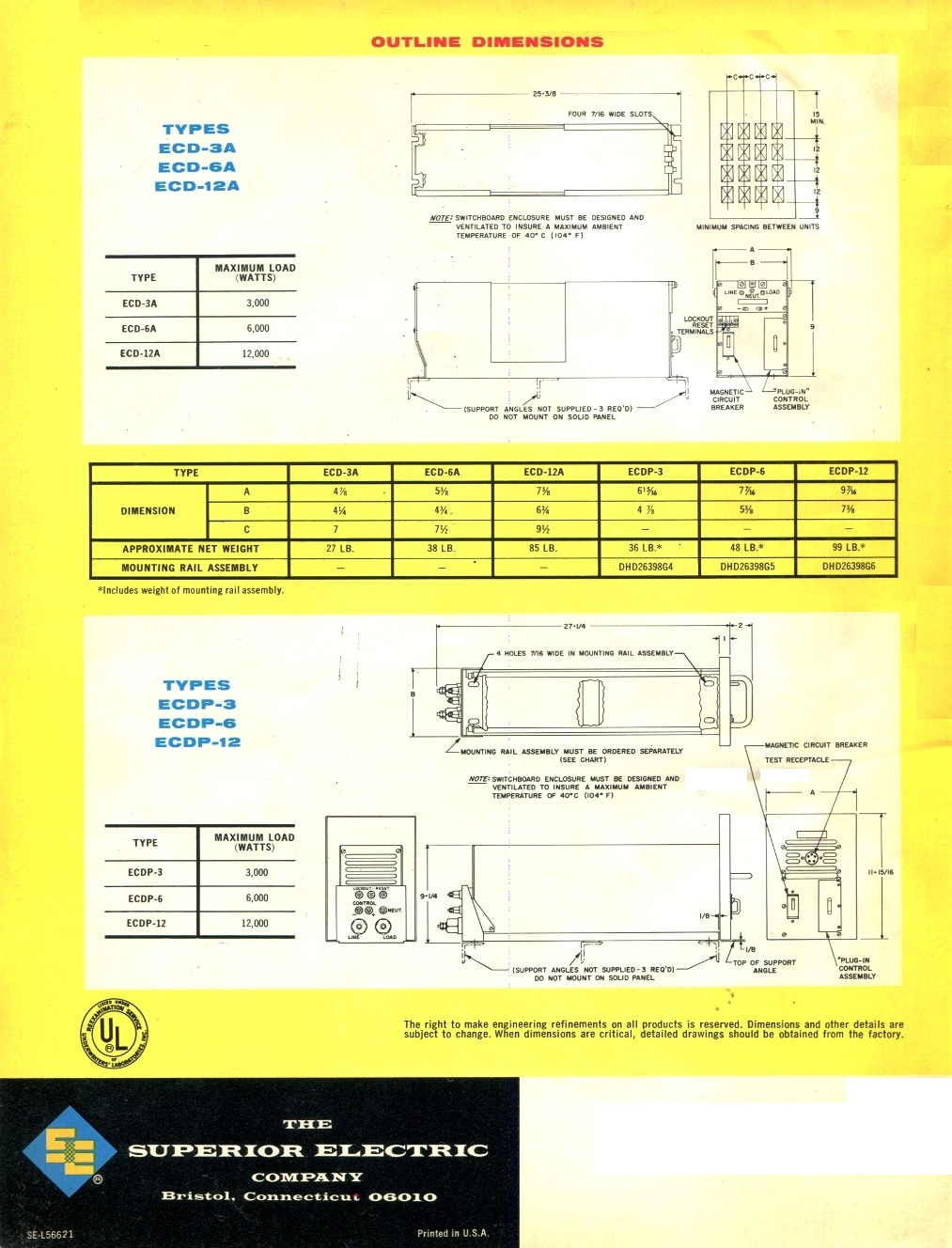After World War II, alternatives to the portable resistance dimmer "piano boards" (left) were sought by shoestring stock and school theatres that could not afford a permanent switchboard. Ward-Leonard offered a pre-War Rube Goldberg solution (right) with resistance dimmers.
The solution was the autotransformer, first seen in the 1936 Kliegl catalog, courtesy Rick Zimmerman. The Transtat or Autrastat (see correction stamp) was also manufactured by Ward-Leonard.
Trumbull Electric introduced a permanent switchboard featuring an improved Ward-Leonard Autrastat.
Superior Electric improved upon Ward-Leonard's design and in the 1950s brought out their own radial autotransformer, familiarly known as the Variac. Virtually indestructible, these dimmers were protected by a hidden red reset button in addition to fuse or breaker protection.
The Variac was adapted into the Wallbox Dimmer (WBD), the first successful household fader. Initially rated for only 360 watts, that dimmer and Superior's familiar sickle logo can still be seen here and there.
In 1955, a 360-watt dimmer took a lot of space.
Superior also took command of the new architectural dimming market with its 5K stacking Powerstat autotransformers. Motor-driven with factory-set fade times of five, fifteen, thirty or sixty seconds, they were remotely controlled by a center-off momentary-on toggle switch ( lower right). Manual versions with a hand wheel were also offered.
Industrial designers transformed the Powerstat into the Luxtrol and made it sexy for its 1957 debut. Proportional fading was a brand new and terribly attractive concept. This Luxtrol featured six 1K dimmers and a 6K electrical master, which could also be used independently, via use of the 50A female pin connector (bottom right). The compartment top right contains glass edison fuses. However, 1K dimmers were good for little but control of specials.
The war horse Luxtrol was the 2500 series, shown below with a mechanical master and 2.5K dimmers, each good for control of three 750 watt lekos or four 500 watt fresnels, the currency of the day. The packs could be stacked four high and required expert operation and a good cue sheet.
The new autotransformers had three major advantages over resistance plates: left to right, cool operation; flexible capacity; and electrical mastering. Resistance dimmers drew a full load, dim or bright, because the power was dissipated in the form of heat, and unless fully loaded, the circuit would not dim out fully. The largest plate manufactured was only 3600 watts, so electrical mastering was impractical.
But whatever the make or model, these boards were heavy. The largest Luxtrol weighed in at 220 and gave out sixty-seven watts per pound.
Like many of the majors of the era, Luxtrol stumbled into the world of electronic dimming and failed. Their punch card Scenamatic was unique, but only Jesus could light "The Song of Norway" with a mere twelve dimmers.
Are Luxtrols extinct? No, in fact some still work on the New York stage, like this house light dimmer at Broadway's Imperial Theatre.
The 1957 Luxtrol debut catalog:
Shop Drawing 1948
Luxtrol Scenamatic Bulletin 1966
March 2017







































